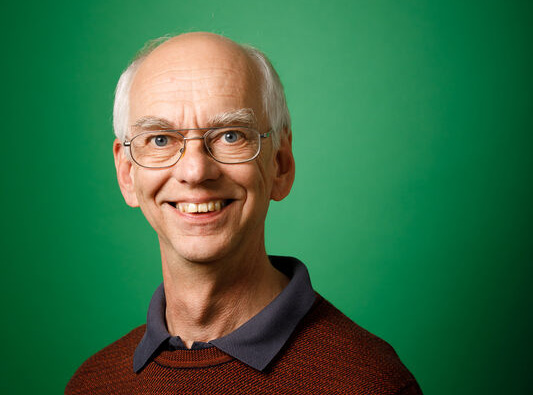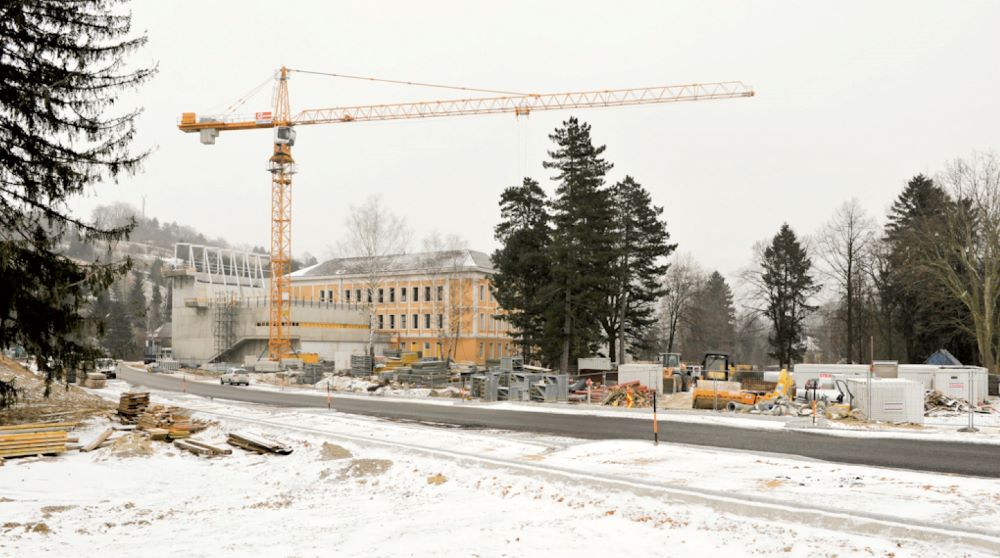September 6, 2022
“I believed in ISTA from the beginning.”
Laurenz Niel, one of the first employees at ISTA, talks about the institute's history

Laurenz Niel, responsible for Professor Appointments & Institute Research in the Office of the President office © ISTA
You were one of the first employees of ISTA, is that right?
Yes, I was selected together with the first Managing Director Gerald Murauer in a hearing in January 2007, but I ended up starting as the third employee because I still had a notice period in my previous job.
Did the campus even exist at that time?
There was the campus, but it was still a hospital. There were still patients. The hospital was already near to closing down, but it was still in operation for a few months. In the early days, we went to the hospital canteen for lunch. The only building that was prepared for the Institute at that time was the one that now houses Construction & Maintenance. The Voestalpine building housed the hospital’s management. There were still about 30 buildings scattered across the campus, about half of them have since been demolished. The site looked completely different. Until the opening of the campus in June 2009, no stone was left unturned. The entire infrastructure has been completely rebuilt.

What was your positon at the Institute back then and how has it changed since?
My first position was Coordinator of the Scientific Board. It was my job to initiate the process of bringing scientists to the Institute. It was still a research institute without researchers. I worked very closely with Haim Harari, Olaf Kübler and Arnold Schmidt. Haim was something like Acting President until the first President Tom Henzinger arrived, Olaf was Chair of the Scientific Board, and Arnold was his deputy. I did the first search for scientists with these people. Very soon Helga Materna joined us, who was also instrumental. We then built up the Academic Affairs department, which I also headed myself in the beginning. In 2018, I handed over the management of the department to Barbara Abraham. Since then, I have held the staff position in the Office of the President.
At some point there was a first research group. Has the Institute grown at the same pace since then?
The pace has not changed dramatically, on average five new research groups per year. Usually there is a jump when a new building opens. We grow with the space we have at our disposal.
Is there a highlight in the 15 years that you look back on with pleasure?
One highlight was certainly the opening of the campus in 2009. At that time, there were about 10 of us in Admin. There was one professor, Nick Barton, with a student and a postdoc. It was a four-day event. The first day was the first Open Campus and we were overrun because so many curious people came, even though there wasn’t much to see yet. It was a huge traffic chaos. Then there were three days of programmes, the official ceremony with the Federal President and other politicians, as well as high-level scientific symposia. And there were so few of us. To this day I wonder how we managed it. But somehow it worked. There was a spirit of optimism, everyone pulled together. That was really a highlight.
Was there anything within these 15 years that really surprised you?
Yes. Right at the beginning, and it was not a pleasant surprise. The first president we wanted surprisingly cancelled his appointment shortly after it had already been announced in the media. That was a setback and at that time many believed that nothing would ever come out of the Institute. The fact that it turned out so well was a surprise for many, but I believed in it from the beginning.

Was this the only challenge in the early days of the Institute?
No. The media reported very critically about the Institute. It was feared that a lot of money would be put into a mediocre institution. However, I believed that something could come of it. I knew the Austrian research landscape well and had read many strategy papers. Austria really has no shortage of strategy papers. Many of them don’t say much of substance, except repetitive blah-blah. But the strategy paper for this institute really stood out in my eyes. It was really good. And we also adhered very well to it.
So the initial criticism quickly died down?
That has always been a question of perspective. In the media, the Institute has always been described as an elite university. From the perspective of the scientists we had to recruit, however, it was an absolute no-name institute. Nobody knew Klosterneuburg, nobody knew the Institute. The perception of the location could hardly be more different either. From Vienna’s perspective, the Institute is somewhere behind the Vienna Woods. In Vienna, there were always people who said: If the Institute is not located in the city, it will never be successful. But the scientists who came here say: I’m going to Vienna. Because Vienna is attractive. Some time ago I did an interview with the then Mayor of Vienna, Michael Häupl. And he said: “At the time, we lost the competition for the location of the ISTA against Lower Austria. But Vienna still won because the Institute is perceived as part of Vienna’s research environment.”
In 15 years at ISTA, I’m sure something strange has happened, hasn’t it?
I remember one thing. I used to have an almost 20 year old Mitsubishi minibus because I have a big family. And when we had the first evaluation in 2011, there was a dinner with the review committee in the Stiftskeller in Klosterneuburg. Afterwards they all wanted to go back to Vienna, but it was in the depths of winter and there were too few taxis. So I packed all six committee members, including two Nobel Laureates into my minibus and took them to Vienna. Halfway there, a warning light suddenly came on and I didn’t know what was going on. I then had to check every single door and there was a lot of rattling in the car. The professors took it all with great humor. This drive did not harm the evaluation. It was excellent.

In September, the 1000th employee will start at the Institute. Where do you see the Institute when the 2000th employee is hired in a few years?
That will take some time, because I think our growth will continue at the same pace as before. We will probably have consolidated our reputation by then. Now we are still perceived as a newcomer. Then we will be seen as a fixed part of the European top research landscape. The T in the name ISTA will be filled with more life. More technology research will take place on campus, and with it will come with a change in culture. And I hope that we will be in more intensive exchange with other Austrian institutions that want to learn something from us as a role model.



